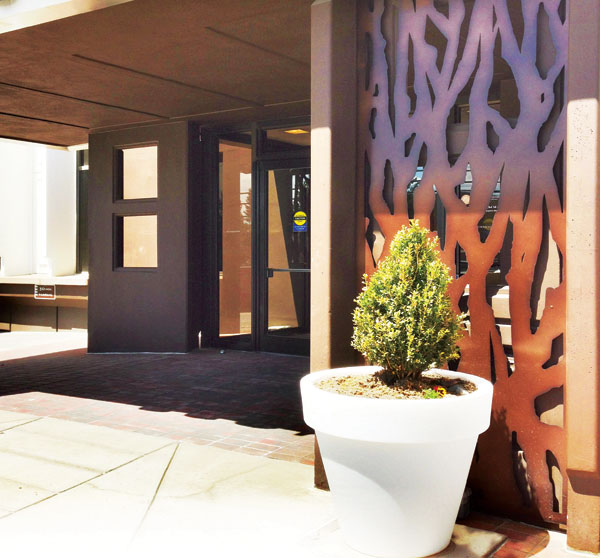Pattern Mapping for Lasting Design
Using Patterned Panels in Design
When using architectural panels with patterned openings to create privacy or shade, to hide unsightly equipment, or adorn a secure railing, successfully achieving the design objective depends heavily upon identifying a pattern that will perform functionally as needed and, then, physically placing the panel in the appropriate proximity to what is being hid, shaded, or obscured. Using pattern to enhance or revamp the design of an existing building requires consideration of the form and context against which the pattern will play. Here are a few guidelines for determining which type of pattern is technically best-suited for a specific job.

Photo courtesy of Parasoleil
These patterned architectural panels were used to rebrand a less appealing entryway to an office building in South Denver.
Best Practices for Achieving Privacy
When attempting to create privacy in a location, continuous patterns can offer a more effective visual barrier, even with larger openings, than their modular counterparts. As previously mentioned, people tend to understand modular patterns more quickly than continuous patterns and can often see an image obstructed by a modular pattern with more success. The predictable presence of the modular pattern makes it easier for the brain to fill in the parts of the panel blocking the view and discern the image, whereas the unpredictability of the continuous pattern makes it more of a challenge to fill in the missing pieces.
Placement of the panels is also a critical element in creating privacy. For example, if using a modular pattern with openings that are larger than 2 inches in diameter and less than 2 inches apart, place the panel 6 feet from the private area. Install a continuous pattern with the same openness factor 25 percent closer to the private area or select a continuous pattern with up to 50 percent larger openings and place it 6 feet from the private area to deliver the same level of privacy offered by the modular pattern. It should be noted that although a larger openness factor can be used when specifying a continuous panel to deliver the requisite level of privacy, larger openness factors may decrease the level of privacy that is perceived.









